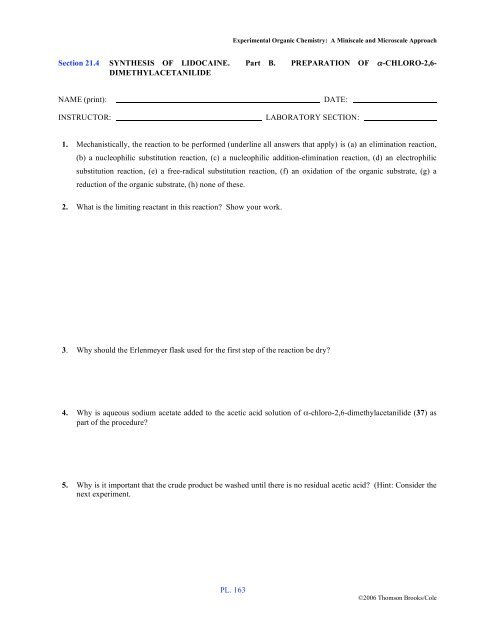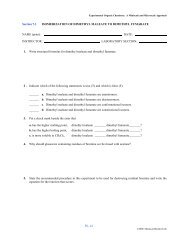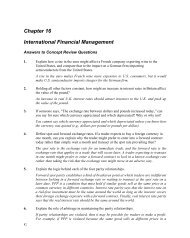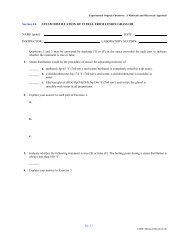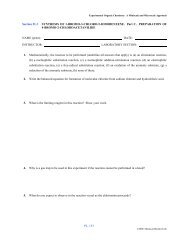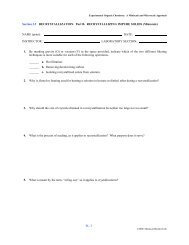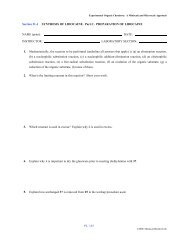SYNTHESIS OF LIDOCAINE. Part B. PREPARATION OF a-CHLORO ...
SYNTHESIS OF LIDOCAINE. Part B. PREPARATION OF a-CHLORO ...
SYNTHESIS OF LIDOCAINE. Part B. PREPARATION OF a-CHLORO ...
- No tags were found...
You also want an ePaper? Increase the reach of your titles
YUMPU automatically turns print PDFs into web optimized ePapers that Google loves.
Experimental Organic Chemistry: A Miniscale and Microscale ApproachSection 21.4 <strong>SYNTHESIS</strong> <strong>OF</strong> <strong>LIDOCAINE</strong>. <strong>Part</strong> B. <strong>PREPARATION</strong> <strong>OF</strong> α-<strong>CHLORO</strong>-2,6-DIMETHYLACETANILIDENAME (print):INSTRUCTOR:DATE:LABORATORY SECTION:1. Mechanistically, the reaction to be performed (underline all answers that apply) is (a) an elimination reaction,(b) a nucleophilic substitution reaction, (c) a nucleophilic addition-elimination reaction, (d) an electrophilicsubstitution reaction, (e) a free-radical substitution reaction, (f) an oxidation of the organic substrate, (g) areduction of the organic substrate, (h) none of these.2. What is the limiting reactant in this reaction? Show your work.3. Why should the Erlenmeyer flask used for the first step of the reaction be dry?4. Why is aqueous sodium acetate added to the acetic acid solution of α-chloro-2,6-dimethylacetanilide (37) aspart of the procedure?5. Why is it important that the crude product be washed until there is no residual acetic acid? (Hint: Consider thenext experiment.PL. 163©2006 Thomson Brooks/Cole
Experimental Organic Chemistry: A Miniscale and Microscale Approach6. Explain how unchanged 36 is removed from 37 in the workup procedure used.7. What action should you take if α-chloroacetyl chloride gets on your skin?8. List the possible effects of inhaling excessive amounts of 2,6-dimethylaniline.PL. 164©2006 Thomson Brooks/Cole


